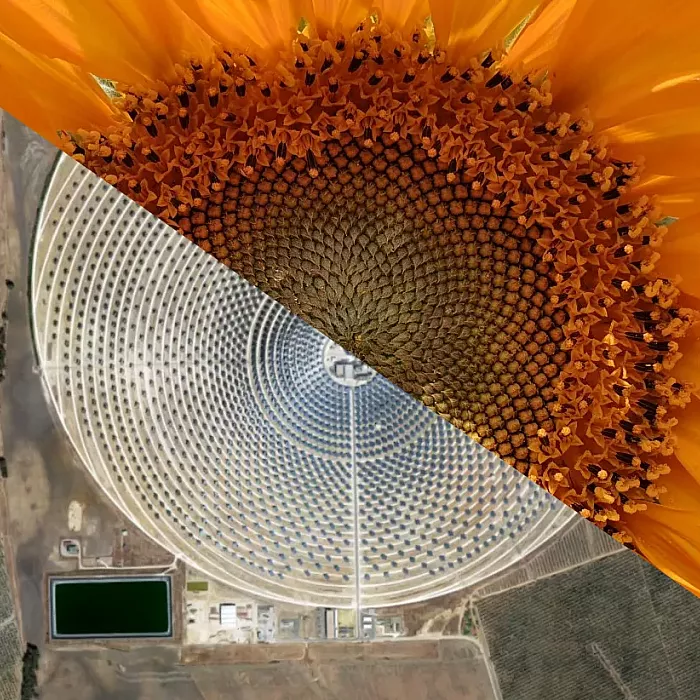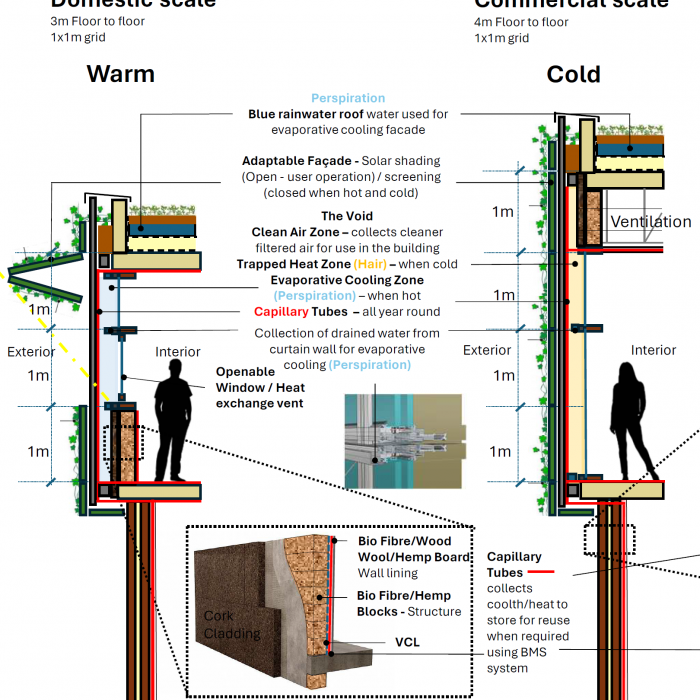By 2050 the world’s population will reach 10 billion people and by then 68% will live in cities. Our societies need to rapidly change to address global warming, loss of biodiversity, and resource scarcity. Buildings and particularly their skin play a key role in tackling these challenges.
"Cities only take up about 3% of the world's land area, but they use most of the world's natural resources. They use the largest part of global energy, water, and materials and contribute to many drivers of global environmental degradation, including climate change, deforestation, loss of biodiversity, and reductions in the ability of ecosystems to provide the services that humanity relies upon."
Façades are responsible for around 20-25% of total building energy consumption.
Embracing sustainable facade designs can transform buildings into beacons of ecological responsibility, offering benefits for both the environment and the people who inhabit these spaces.
For a sustainable future façade, we investigated nature as a model of ecosystem functioning and used an approach called biomimicry.
Biomimicry emulates the processes and functions of natural systems to solve human design challenges. Hook-and-loop fasteners inspired by the cocklebur seed, self-cleaning paint borrowed from lotus leaves, gecko tape inspired by gecko feet, and Aeroplane wings inspired by birds' wings. Learning from nature is not new.
We have used skin as the inspiration for our façade design
Hairs on Humans and animals stand on end to trap and therefore preserve heat, Capillaries expand and contract to shed and retain heat loss, and they carry heat around the body. Perspiration on the skin heats up and evaporates cooling the body in response.
Bioskin is a biophilic façade solution that mimics human skin, it is adaptable, flexible, and suitable for use in commercial and residential scenarios.
The façade solution comprises of a glazed or solid inner skin with an adaptable, flexible, movable outer skin. The void between the twin skins traps heat in cold conditions, Just like the hairs on our skin, and uses evaporative cooling in hot conditions, mimicking perspiration. Capillary tubes inside the void transfer this energy around the building storing the energy for use at other times, similar to capillaries and veins carrying heat in blood around our body. The outer façade filters the incoming air into the void and this clean air is used inside the building.
While the strategic façade system remains constant the panels are adaptable.
Each panel within the grid can be a different design to suit different climates, geographical locations, façade orientation, economic conditions, aesthetics, or local materials.

Hydro Skin
Hydro Skin is a cooling panel with a biodegradable PLA base and Polyethylene Glycol hydrogel. It absorbs moisture from the air and rainwater, generating cooled air for indoor circulation.

Thermoflex Skin
Thermoflex skin is a smart shading panel. It is a double-glazed panel with thermobimetals in the cavity. Nitinol, is a shape memory alloy that responds dynamically to temperature fluctuations by changing its shape without the need for additional energy input.

Power Skin
Power skin uses PVs and piezoelectric materials to generate clean electricity. In transparent panels, advanced transparent solar panels are used. In opaque panels, outer metal layer is coated with piezoelectric to generate an electric charge when exposed to wind pressure. This charge is then captured and harnessed as usable electricity.

Living Skin
The living wall outer skin, crafted from bamboo or local timbers, integrates a three-layer system supported on bamboo lattice and can be applied across all panel types. It provides diffused lighting in transparent panels and habitat for wildlife in opaque ones, while also filtering air naturally, reducing reliance on mechanical methods and operational carbon.

Breathing Skin
Breathing skin is crafted to enhance indoor air quality by purifying and cleansing the air. It incorporates biophilic elements such as metal or bamboo mesh, as well as repurposed fishing nets, to provide a habitat for microorganisms or moss dedicated to air purification.

Eco Skin
The core of Bioskin's net zero strategy relies on utilizing bio-based materials for the inner layer of the façade. Examples like bamboo, cork, hempcrete, and rammed earth offer durability, resilience, thermal properties, and sustainability benefits, aligning with the project's commitment to eco-friendly design.
Bioskin embodies a holistic approach to design, integrating sustainability and harmony with nature.
It outlines a net zero carbon strategy by using carbon-neutral materials, utilising local materials, generating energy from clean sources, and thoughtful assembling of panels to reduce the carbon footprint.
By integrating living panels, Bioskin creates wildlife habitat and contributes to biodiversity and sequestration of Co2.
Lastly, Bioskin acts as part of and integrates with its environment. It links various systems with different functions, from BMS in hi-tech interventions to strategic panel arrangements for enhanced performance.



